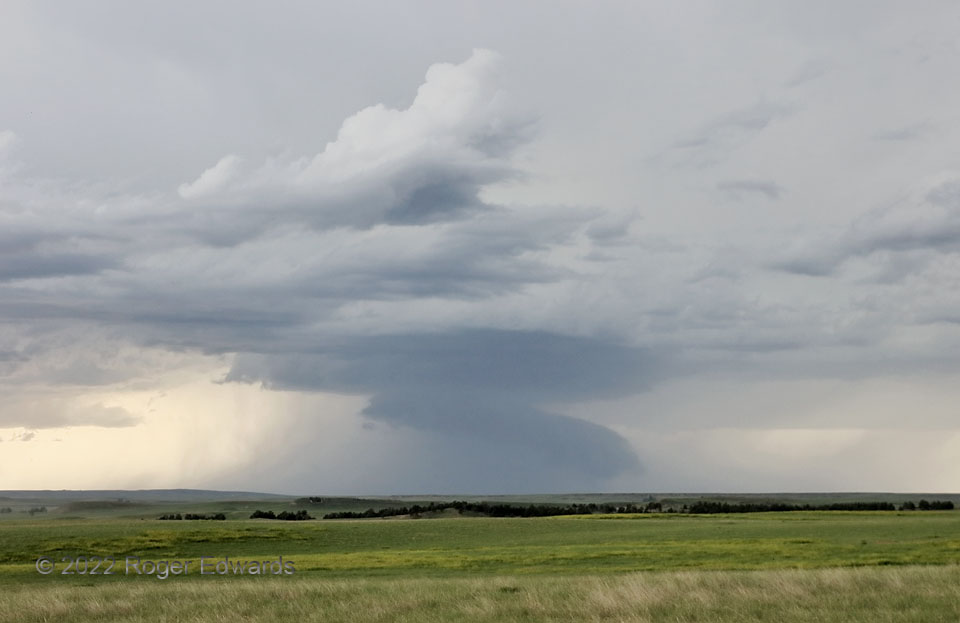The first I encountered in a chain of western South Dakota supercells, and positionally the third up from the back (south) end, passed by in increasingly rain-wrapped and high-based form. Its wall cloud elongated into a socked-foot shape before the storm moved north-northeast up the line and lose definition. The wall cloud had been more blocky and higher, but as precip increased all around, it grew lower. How does this happen? Two ways, the second more influential here: 1) lowering pressure, which lowers condensation level, and 2) cooling of inflow air, in this case by rain. The latter also helped the wall cloud elongate in sock-like form, toward the forward-flank core region. When supercell bases get lower, what’s really happening is some combination of both of those factors, while the air into wall clouds is rising. The same concept, with faster rising motion, explains why tornadoes appear to “touch down” but really don’t in a physical sense. This supercell never came close to being tornadic. I stayed at this location for a bit to watch the next supercell approach as well.
8 NE Provo SD (13 Jun 22) Looking WNW
43.2454, -103.7006
